文章目录
- 八、list
- 1. list的介绍
- 2. list的使用
- 3. list的模拟实现
- 4. list模拟实现的代码整合
- 1. list.h
- 2. test.cpp
- 未完待续
八、list
list链接
1. list的介绍
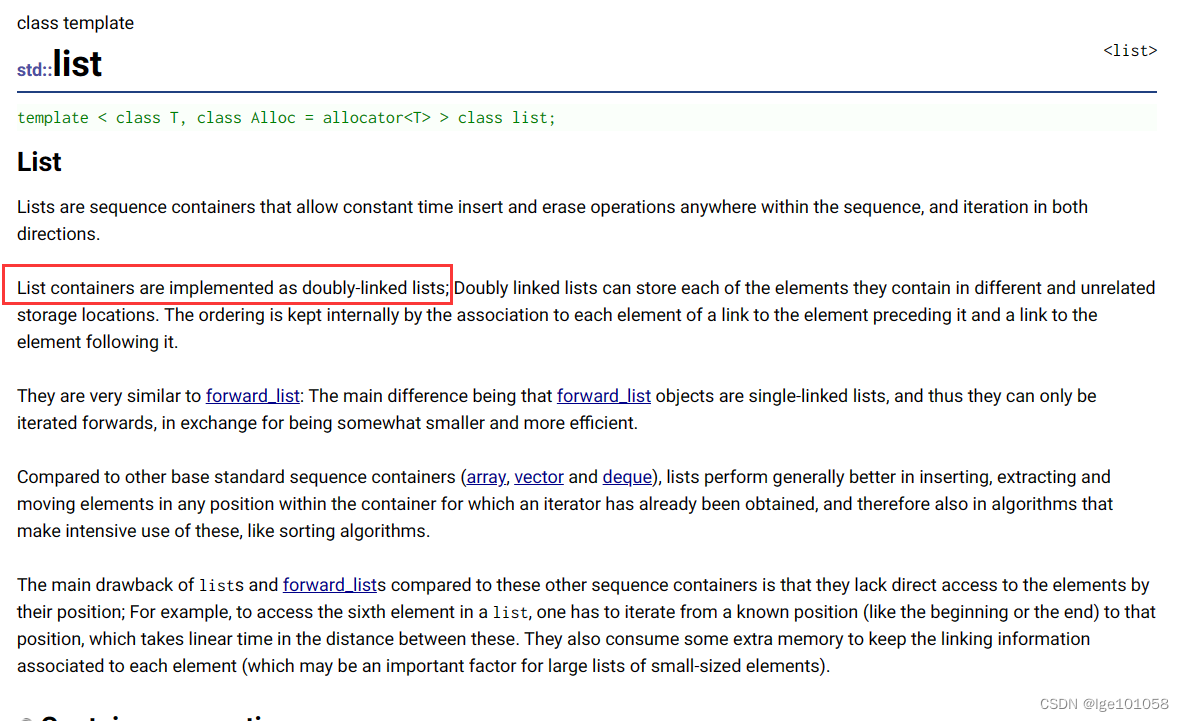
是的, list 就是带头双向循环链表。
2. list的使用
通过 string 和 vector 的学习,我们差不多已经很了解容器的使用了,接下来要非常快速的过一遍了。
#include<iostream>
#include<list>
using namespace std;int main()
{list<int> lt;lt.push_back(1);lt.push_back(2);lt.push_back(3);lt.push_back(4);lt.push_back(5);list<int>::iterator it = lt.begin();while (it != lt.end()){cout << *it << " ";++it;}cout << endl;for (auto e : lt){cout << e << " ";}cout << endl;return 0;
}
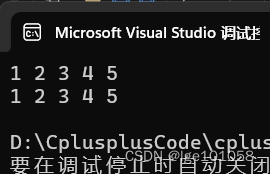
简简单单。
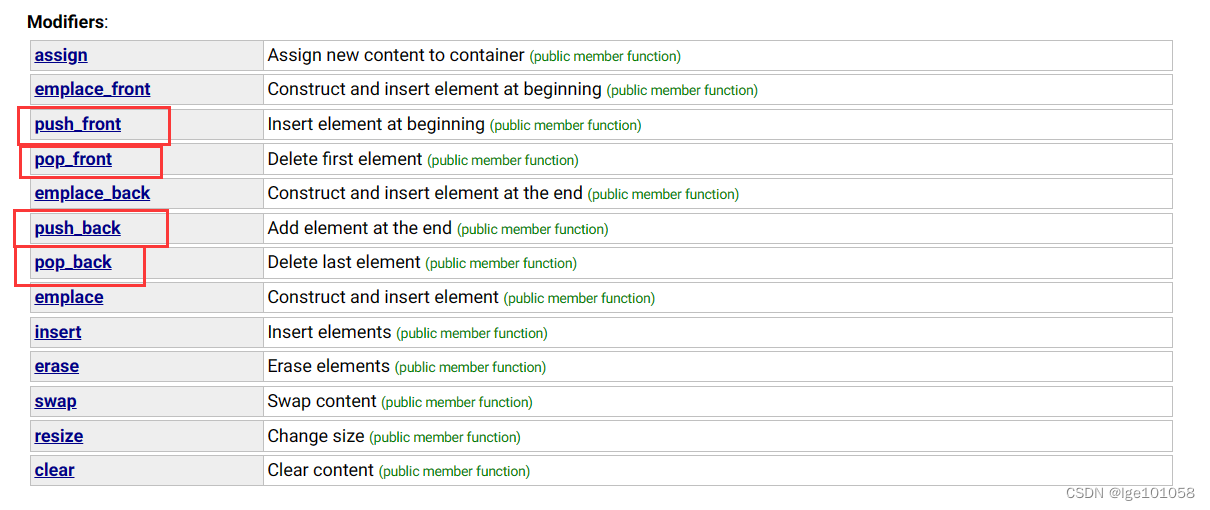
链表嘛,有头插、头删、尾插、尾删。也非常好使用,跟 push_back() 和 pop_back() 一样的用法。看到了 insert 和 erase ,我们知道,vector 的 insert 和 erase 可能会发生迭代器失效的问题,那 list 会出现吗?答案是不会发生,毕竟是链表嘛。
list 的大部分接口我们都了解了,我们就来看看一些之前没见过的东西。

首先我们来看看 reverse 。注意!是 reverse ,不是 reserve ,前者是逆置的意思,后者是保留,扩容的意思。sort 是排序的意思。
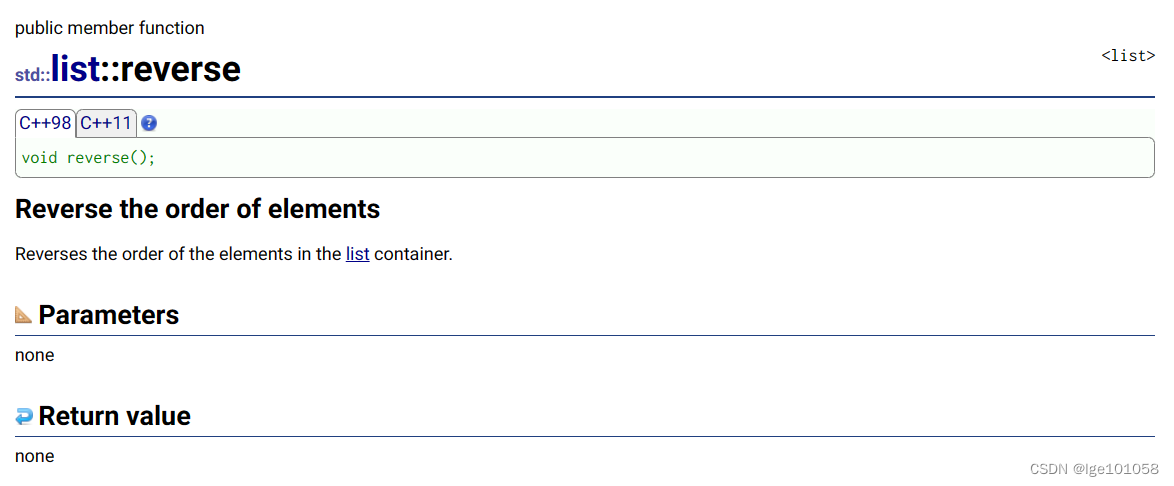

非常的简洁明了啊。
#include<iostream>
#include<list>
using namespace std;int main()
{list<int> lt;lt.push_back(1);lt.push_back(2);lt.push_back(3);lt.push_back(4);lt.push_back(5);for (auto e : lt){cout << e << " ";}cout << endl;lt.reverse();for (auto e : lt){cout << e << " ";}cout << endl;lt.sort();for (auto e : lt){cout << e << " ";}cout << endl;return 0;
}
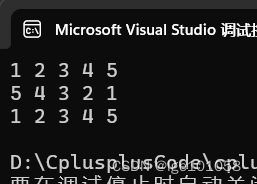
sort 默认排的都是升序,若是想要排降序,需要用到 仿函数 ,这里先不过多介绍。list 的 sort 效率比较低,当数据量大的时候,经量不要用 list 的 sort 排序。
merge 是合并的意思,用的比较少。
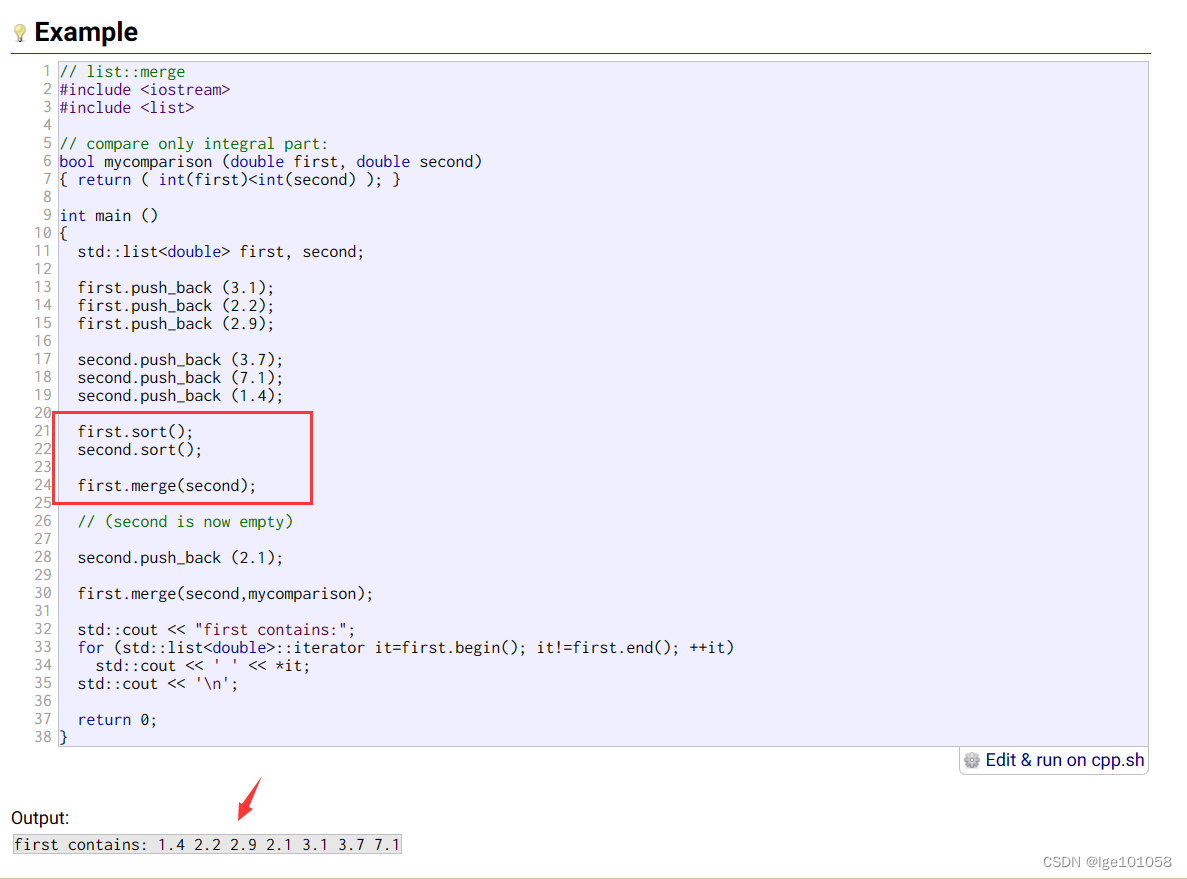
unique 的作用是去重,去除重复元素,要求是必须先有序。

#include<iostream>
#include<list>
using namespace std;int main()
{list<int> lt;lt.push_back(2);lt.push_back(1);lt.push_back(2);lt.push_back(3);lt.push_back(5);lt.push_back(1);lt.push_back(5);lt.push_back(4);lt.push_back(4);lt.push_back(4);lt.push_back(5);lt.push_back(1);lt.push_back(2);for (auto e : lt){cout << e << " ";}cout << endl;// 先排序lt.sort();for (auto e : lt){cout << e << " ";}cout << endl;// 再去重lt.unique();for (auto e : lt){cout << e << " ";}cout << endl;return 0;
}
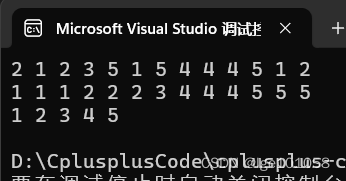
remove 相当于 find + erase ,给你一个值,找到了就删,找不到就不删。
splice 这个接口很怪,它的作用是 转移 。

它可以将某一个链表,或者某个链表的某个值,或者某个链表的某一块区间转移到 position 位置 。也可以自己转移自己。
#include<iostream>
#include<list>
using namespace std;int main()
{list<int> lt;lt.push_back(1);lt.push_back(2);lt.push_back(3);lt.push_back(4);lt.push_back(5);for (auto e : lt){cout << e << " ";}cout << endl;// 将 lt 链表的 begin() 转移到 lt 链表的 end()lt.splice(lt.end(), lt, lt.begin());for (auto e : lt){cout << e << " ";}cout << endl;return 0;
}
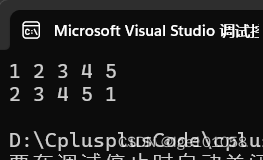
确实将头部的 1 转移到 尾部的 5 后面了。转移的本质是改变节点的指向,并不是删除或创建节点 。
3. list的模拟实现
我们快速的搭一个 list 框架出来, 这个框架大致基于 STL库里的 list 。注意理解。
#pragma once#include<assert.h>namespace my
{// struct 成员默认全公开 节点结构体template<class T>struct ListNode{// 后继指针ListNode<T>* _next;// 前驱指针ListNode<T>* _prev;// 数据域T _data;// 构造函数ListNode(const T& x = T()):_next(nullptr),_prev(nullptr),_data(x){}};template<class T>class list{typedef ListNode<T> Node;public:// 默认构造list(){_head = new Node;_head->_next = _head;_head->_prev = _head;}private:// 指向头节点的指针Node* _head;};
}
写一个尾插操作:
// list类的 public域
void push_back(const T& x)
{// 实例化新节点Node* newnode = new Node(x);// 尾部节点Node* tail = _head->_prev;// 修改新节点的指向newnode->_next = _head;newnode->_prev = tail;// 修改指向新节点的指针tail->_next = newnode;_head->_prev = newnode;
}
有了尾插,我们就想去测试一下,但是测试需要访问,list 本身不支持 下标 + [] 访问,只能通过迭代器访问。我们之前说过 迭代器是一个行为像指针的东西,但不一定是指针 。那么 list 这里的迭代器可以使用原生指针吗,我们发现,链表本身是不连续的,我们 ++指针 无法访问到到下一个元素,解引用指针 也访问不到元素的数据。
因此,这里的迭代器并不能使用原生指针来代替。我们知道,可以通过重载一系列运算符来改变类的行为 ,就像日期类一样,++日期 可以得到下一天的日期,那么我们也可以将迭代器封装成一个类,然后通过重载运算符来改变其行为。
// my命名空间内
// 迭代器模板
template<class T>
struct ListIterator
{typedef ListNode<T> Node;// 指向节点的指针Node* _node;// 构造函数ListIterator(Node* node):_node(node){}
};
我们只写了迭代器类的构造函数,并没有写迭代器的拷贝构造函数。我们没写,编译器会自动生成,编译器生成的拷贝构造是浅拷贝,但恰巧我们要的就是浅拷贝(新的节点也指向某个节点)。析构函数需要写吗?也不需要,因为在这个迭代器类里,只有一个指针而已,节点的空间资源并不属于这个类,所以也不需要这个类来释放。
先来控制迭代器的行为:
// 前置++
Self& operator++()
{_node = _node->_next;return *this;
}// 后置++
Self operator++(int)
{// 拷贝构造Self tmp(*this);_node = _node->_next;return tmp;
}// 前置--
Self& operator--()
{_node = _node->_prev;return *this;
}// 后置--
Self operator--(int)
{Self tmp(*this);_node = _node->_prev;return tmp;
}
接着是迭代器的解引用:迭代器解引用我们要得到什么?得到节点的值,所以要返回数据
// 可读可写
T& operator*()
{return _node->_data;
}
判断相等:
bool operator!=(const Self& it)
{return _node != it._node;
}bool operator==(const Self& it)
{return _node == it._node;
}
现在我们要实现 begin 和 end 。请问这两个函数在哪里实现?在迭代器类里面实现吗?不对,迭代器类根本不知道链表的组成,这俩函数只能在 list类 里面实现。
// list类里面
iterator begin()
{// 匿名对象return iterator(_head->_next);
}iterator end()
{// 匿名对象 _head是最后一个节点的下一个节点return iterator(_head);
}
完事儿,迭代器的行为也写完了,我们把当前的完整代码给出来:
#pragma once#include<assert.h>namespace my
{// struct 成员默认全公开 节点结构体template<class T>struct ListNode{// 后继指针ListNode<T>* _next;// 前驱指针ListNode<T>* _prev;// 数据域T _data;ListNode(const T& x = T()):_next(nullptr),_prev(nullptr),_data(x){}};// 迭代器模板template<class T>struct ListIterator{typedef ListNode<T> Node;// self : 自己typedef ListIterator<T> Self;// 指向节点的指针Node* _node;ListIterator(Node* node):_node(node){}// 没写拷贝构造,因为这是内置类型,默认生成的拷贝构造是浅拷贝,我们要的就是浅拷贝// 也不需要写析构函数,迭代器只有访问权限,资源不属于迭代器// 前置++Self& operator++(){_node = _node->_next;return *this;}// 后置++Self operator++(int){// 拷贝构造Self tmp(*this);_node = _node->_next;return tmp;}// 前置--Self& operator--(){_node = _node->_prev;return *this;}// 后置--Self operator--(int){// 拷贝构造Self tmp(*this);_node = _node->_prev;return tmp;}// 可读可写,引用返回T& operator*(){return _node->_data;}bool operator!=(const Self& it){return _node != it._node;}bool operator==(const Self& it){return _node == it._node;}};// 链表类template<class T>class list{typedef ListNode<T> Node;public:typedef ListIterator<T> iterator;iterator begin(){// 匿名对象return iterator(_head->_next);}iterator end(){// 匿名对象return iterator(_head);}// 默认构造list(){_head = new Node;_head->_next = _head;_head->_prev = _head;}void push_back(const T& x){// 实例化新节点Node* newnode = new Node(x);// 尾部节点Node* tail = _head->_prev;// 修改新节点的指向newnode->_next = _head;newnode->_prev = tail;// 修改指向新节点的指针tail->_next = newnode;_head->_prev = newnode;}private:// 指向头节点的指针Node* _head;};// 测试区
}
我们来测试一下:
// 测试区
void test01()
{list<int> lt;lt.push_back(1);lt.push_back(2);lt.push_back(3);lt.push_back(4);lt.push_back(5);list<int>::iterator it = lt.begin();while (it != lt.end()){std::cout << *it << " ";++it;}std::cout << std::endl;
}
// test.cpp
#include<iostream>
#include"list.h"int main()
{my::test01();return 0;
}
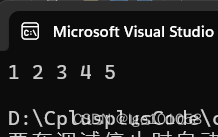
成功运行,我们的最基础的 list 框架可算是搭建好了。
接下来是 insert 。在 pos 位置前插入 val 。

void insert(iterator pos, const T& val)
{// 目标节点Node* cur = pos._node;// 待插入的节点Node* newnode = new Node(val);// 目标节点的上一个节点Node* prev = cur->_prev;newnode->_prev = prev;newnode->_next = cur;prev->_next = newnode;cur->_prev = newnode;
}
还有 erase 。

iterator erase(iterator pos)
{Node* cur = pos._node;Node* prev = cur->_prev;Node* next = cur->_next;prev->_next = next;next->_prev = prev;delete cur;// 返回下一个节点的迭代器,避免迭代器失效return iterator(next);
}
有了 insert 和 erase ,我们就可以把 push_back 给复用一下,然后我们再将其他插入删除给顺便完成了。
void push_back(const T& x)
{insert(end(), x);
}void push_front(const T& x)
{insert(begin(), x);
}void pop_back()
{// 必须是 -- ,不能是 - 1,因为迭代器不支持 - ,支持 --erase(--end());
}void pop_front()
{erase(begin());
}
来测试一下:
// 测试区
void test02()
{list<int> lt;lt.push_back(1);lt.push_back(2);lt.push_front(3);lt.push_front(4);lt.push_back(5);list<int>::iterator it = lt.begin();while (it != lt.end()){std::cout << *it << " ";++it;}std::cout << std::endl;lt.pop_back();lt.pop_front();for (auto e : lt){std::cout << e << " ";}std::cout << std::endl;
}
#include<iostream>
#include"list.h"int main()
{my::test02();return 0;
}
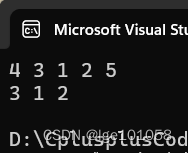
同样符合预期。
size :遍历一遍即可。
size_t size() const
{Node* begin = _head;size_t num = 0;while (begin->_next != _head){++num;begin = begin->_next;}return num;
}
list类 实现的差不多了,我们接着完善 迭代器类 。
我们新增一个自定义类型 A 。
struct A
{int _a1;int _a2;A(int a1 = 0, int a2 = 0):_a1(a1),_a2(a2){}
};
//测试区
void test03()
{list<A> lt;A aa1(1, 1);// 有名对象lt.push_back(aa1);// 匿名对象lt.push_back(A(2, 2));// 多参数的隐式类型转换 {}lt.push_back({ 3,3 });for (auto e : lt){std::cout << e << " ";}std::cout << std::endl;
}
我们会发现不能运行。

因为内置类型可以使用流插入,自定义类型没写重载流插入就用不了,所以该怎么遍历呢?由于这里的成员变量都是共有的,所以直接访问成员变量就可以了。
// 测试区
void test03()
{list<A> lt;A aa1(1, 1);// 有名对象lt.push_back(aa1);// 匿名对象lt.push_back(A(2, 2));// 多参数的隐式类型转换 {}lt.push_back({ 3,3 });list<A>::iterator it = lt.begin();while (it != lt.end()){std::cout << (*it)._a1 << (*it)._a2 << " ";++it;}std::cout << std::endl;
}
#include<iostream>
#include"list.h"int main()
{my::test03();return 0;
}
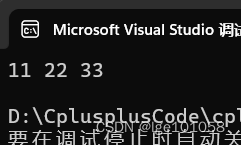
就可以遍历了。但是,既然可以 (*it)._a1 那就要可以 it->_a1 。所以我们还需要给迭代器类再重载一个运算符。
T* operator->()
{return &_node->_data;
}
有人会说,欸?这里怎么返回的是data的地址啊,那咋能访问到 _a1 啊?
void test04()
{list<A> lt;A aa1(1, 1);// 有名对象lt.push_back(aa1);// 匿名对象lt.push_back(A(2, 2));// 多参数的隐式类型转换 {}lt.push_back({ 3,3 });list<A>::iterator it = lt.begin();while (it != lt.end()){std::cout << it->_a1 << it->_a2 << " ";++it;}std::cout << std::endl;
}
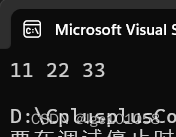
但确实能跑了。其实是这里编译器做了相关的优化。咱们写的 it->_a1 编译器自动识别成 it->->_a1 ,也就是 it.operator->()->_a1 ,就是 &_data->_a1 。这下终于理解了,原理编译器帮我们省略了一个 -> 。
我们来实现一个 const迭代器 。最简单粗暴的方式就是 再定义一个const迭代器类 然后将其 解引用重载函数 和 ->重载函数 前面加上 const 就能够完成任务,但是如果就这两处不同的话,那普通迭代器和const迭代器代码相似度也太高了,有点冗余,该怎么合并呢?可以用类模板。
// Ref就是引用返回,Ptr就是指针返回
template<class T, class Ref, class Ptr>
struct ListIterator
{//
};// list类里
typedef ListIterator<T, T&, T*> iterator;
typedef ListIterator<T, const T&, const T*> const_iterator;
这就相当于:我们写了一个类模板,编译器帮我们实例化生成了普通迭代器类和const迭代器类 。
list 到这里基本差不多了,我们最后收尾一下。
list 的清理:
void clear()
{iterator it = begin();while (it != end()){it = erase(it);}
}~list()
{clear();delete _head;_head = nullptr;
}
判空:
bool empty()
{return size() == 0;
}
拷贝构造:
list(const list<T>& lt)
{// 初始的头结点_head = new Node;_head->_next = _head;_head->_prev = _head;for (auto& e : lt){push_back(e);}
}
复制重载:
void swap(list<T> lt)
{std::swap(_head, lt._head);
}list<T>& operator=(list<T> lt)
{swap(lt);return *this;
}
现在大部分接口都已经手到擒来了。
4. list模拟实现的代码整合
1. list.h
#pragma once#include<assert.h>namespace my
{// struct 成员默认全公开 节点结构体template<class T>struct ListNode{// 后继指针ListNode<T>* _next;// 前驱指针ListNode<T>* _prev;// 数据域T _data;ListNode(const T& x = T()):_next(nullptr),_prev(nullptr),_data(x){}};// 迭代器模板template<class T, class Ref, class Ptr>struct ListIterator{typedef ListNode<T> Node;// self : 自己typedef ListIterator<T, Ref, Ptr> Self;// 指向节点的指针Node* _node;ListIterator(Node* node):_node(node){}// 没写拷贝构造,因为这是内置类型,默认生成的拷贝构造是浅拷贝,我们要的就是浅拷贝// 也不需要写析构函数,迭代器只有访问权限,资源不属于迭代器// 前置++Self& operator++(){_node = _node->_next;return *this;}// 后置++Self operator++(int){// 拷贝构造Self tmp(*this);_node = _node->_next;return tmp;}// 前置--Self& operator--(){_node = _node->_prev;return *this;}// 后置--Self operator--(int){// 拷贝构造Self tmp(*this);_node = _node->_prev;return tmp;}// 可读可写//T& operator*()Ref operator*(){return _node->_data;}//T* operator->()Ptr operator->(){return &_node->_data;}bool operator!=(const Self& it){return _node != it._node;}bool operator==(const Self& it){return _node == it._node;}};template<class T>class list{typedef ListNode<T> Node;public:typedef ListIterator<T, T&, T*> iterator;typedef ListIterator<T, const T&, const T*> const_iterator;iterator begin(){// 匿名对象return iterator(_head->_next);}iterator end(){// 匿名对象return iterator(_head);}// 迭代器指向的内容不能修改,const iterator不是我们要的const迭代器const_iterator begin() const{return iterator(_head->_next);}const_iterator end() const{return iterator(_head);}// 默认构造list(){_head = new Node;_head->_next = _head;_head->_prev = _head;}list(const list<T>& lt){// 初始的头结点_head = new Node;_head->_next = _head;_head->_prev = _head;for (auto& e : lt){push_back(e);}}void swap(list<T> lt){std::swap(_head, lt._head);}list<T>& operator=(list<T> lt){swap(lt);return *this;}bool empty(){return size() == 0;}void clear(){iterator it = begin();while (it != end()){it = erase(it);}}~list(){clear();delete _head;_head = nullptr;}//void push_back(const T& x)//{// // 实例化新节点// Node* newnode = new Node(x);// // 尾部节点// Node* tail = _head->_prev;// // 修改新节点的指向// newnode->_next = _head;// newnode->_prev = tail;// // 修改指向新节点的指针// tail->_next = newnode;// _head->_prev = newnode;//}void push_back(const T& x){insert(end(), x);}void push_front(const T& x){insert(begin(), x);}void pop_back(){// 必须是 -- ,不能是 - 1,因为迭代器不支持 - ,支持 --erase(--end());}void pop_front(){erase(begin());}iterator insert(iterator pos, const T& val){// 目标节点Node* cur = pos._node;// 待插入的节点Node* newnode = new Node(val);// 目标节点的上一个节点Node* prev = cur->_prev;newnode->_prev = prev;newnode->_next = cur;prev->_next = newnode;cur->_prev = newnode;return iterator(newnode);}iterator erase(iterator pos){Node* cur = pos._node;Node* prev = cur->_prev; Node* next = cur->_next;prev->_next = next;next->_prev = prev;delete cur;// 返回下一个节点的迭代器,避免迭代器失效return iterator(next);}size_t size() const{Node* begin = _head;size_t num = 0;while (begin->_next != _head){++num;begin = begin->_next;}return num;}private:// 指向头节点的指针Node* _head;};struct A{int _a1;int _a2;A(int a1 = 0, int a2 = 0):_a1(a1),_a2(a2){}};void test01(){list<int> lt;lt.push_back(1);lt.push_back(2);lt.push_back(3);lt.push_back(4);lt.push_back(5);list<int>::iterator it = lt.begin();while (it != lt.end()){std::cout << *it << " ";++it;}std::cout << std::endl;}void test02(){list<int> lt;lt.push_back(1);lt.push_back(2);lt.push_front(3);lt.push_front(4);lt.push_back(5);list<int>::iterator it = lt.begin();while (it != lt.end()){std::cout << *it << " ";++it;}std::cout << std::endl;lt.pop_back();lt.pop_front();for (auto e : lt){std::cout << e << " ";}std::cout << std::endl;std::cout << lt.size();}void test03(){list<A> lt;A aa1(1, 1);// 有名对象lt.push_back(aa1);// 匿名对象lt.push_back(A(2, 2));// 多参数的隐式类型转换 {}lt.push_back({ 3,3 });list<A>::iterator it = lt.begin();while (it != lt.end()){std::cout << (*it)._a1 << (*it)._a2 << " ";++it;}std::cout << std::endl;}void test04(){list<A> lt;A aa1(1, 1);// 有名对象lt.push_back(aa1);// 匿名对象lt.push_back(A(2, 2));// 多参数的隐式类型转换 {}lt.push_back({ 3,3 });list<A>::iterator it = lt.begin();while (it != lt.end()){std::cout << it->_a1 << it->_a2 << " ";++it;}std::cout << std::endl;}
}
2. test.cpp
#include<iostream>
#include"list.h"int main()
{my::test03();return 0;
}




)

--- 认识堆堆排序Topk)

)





)




